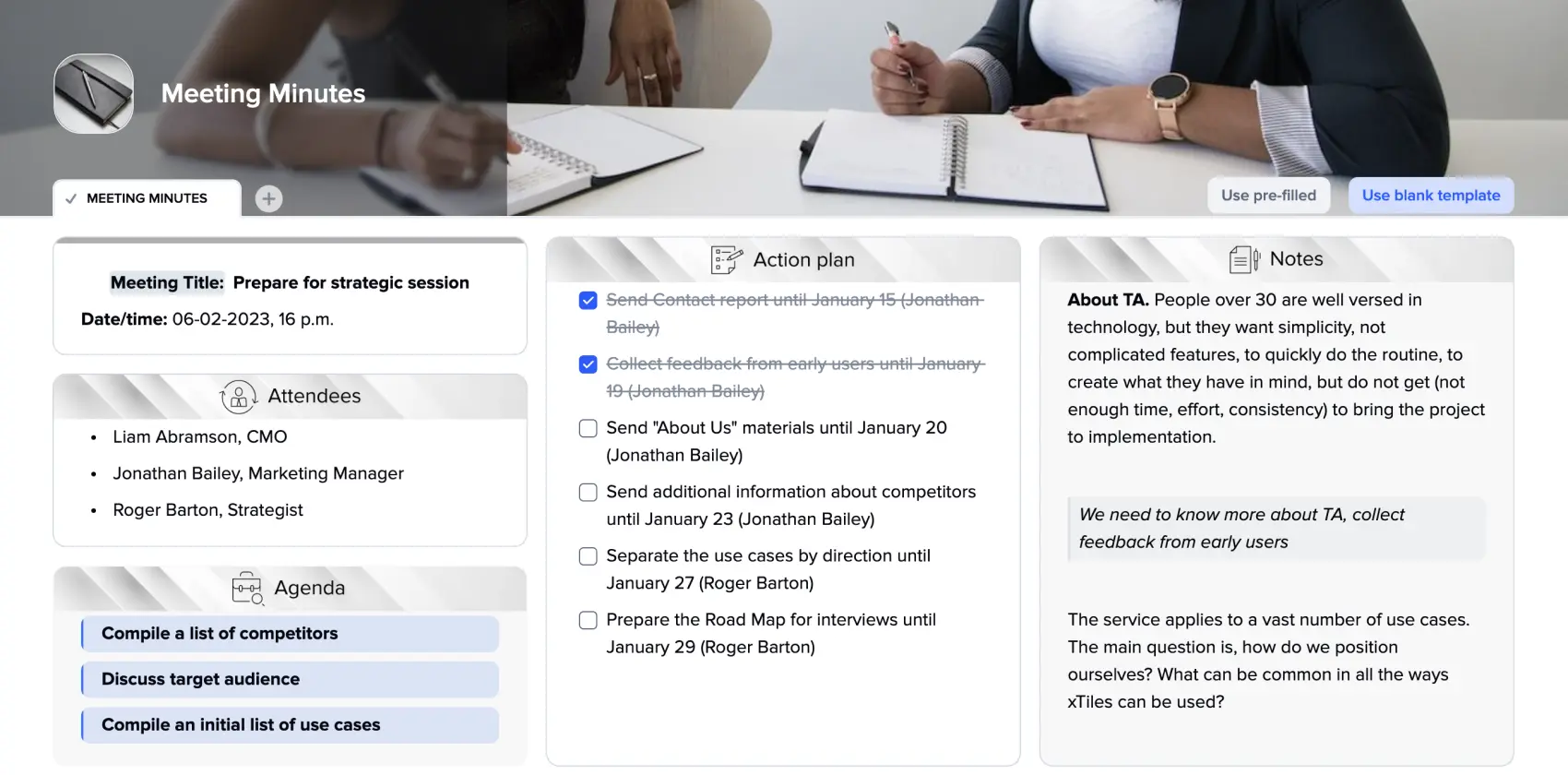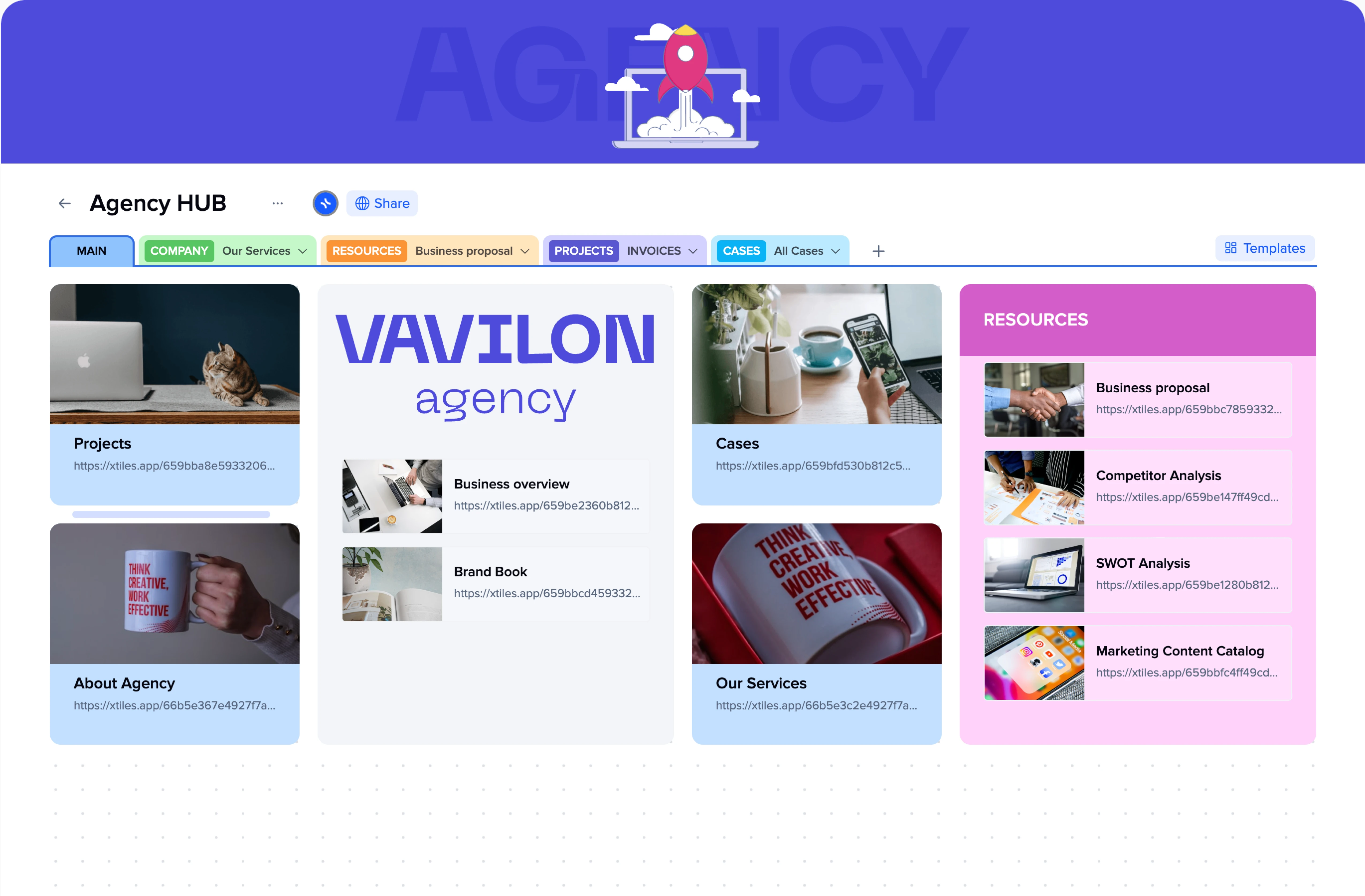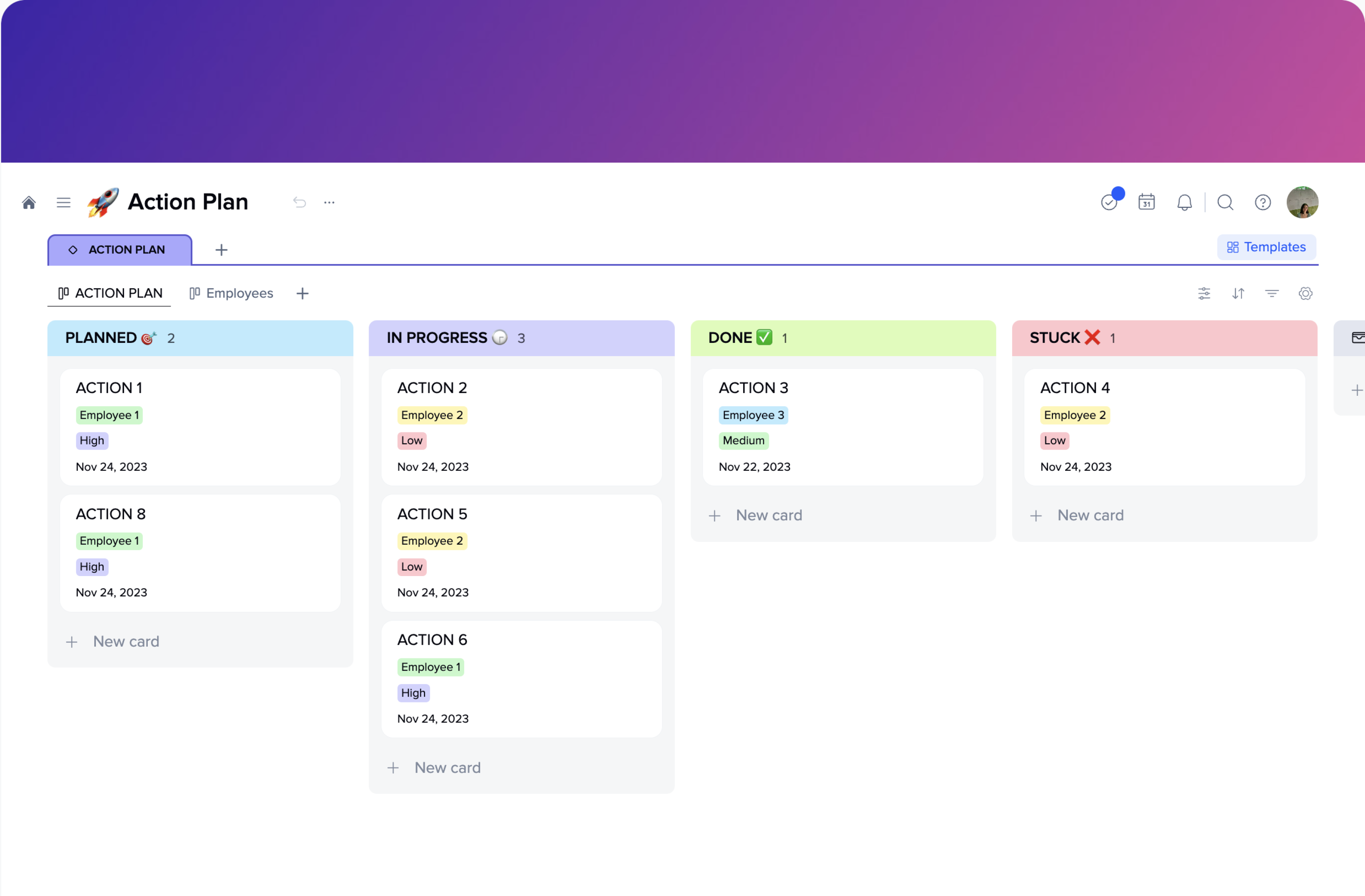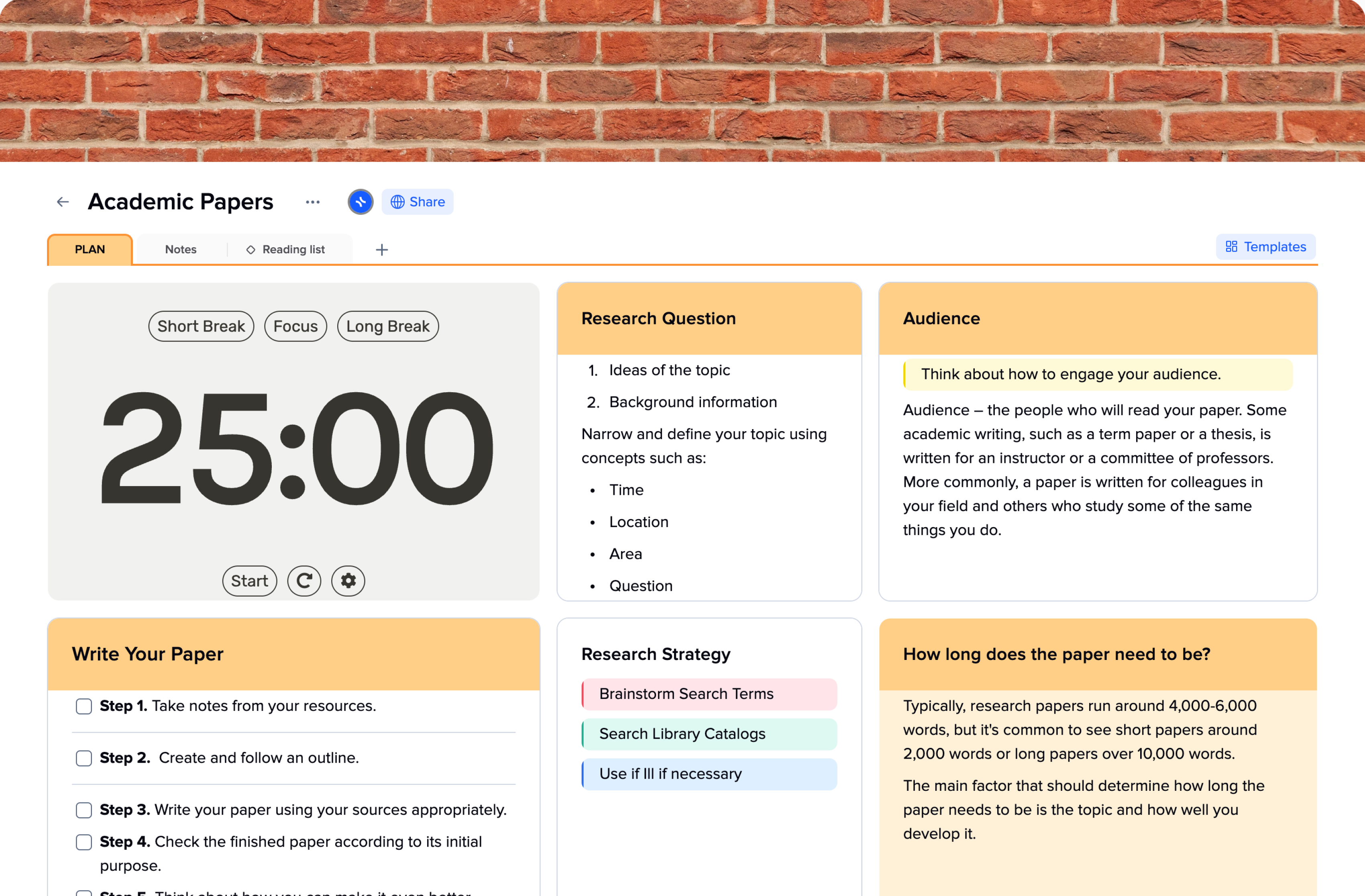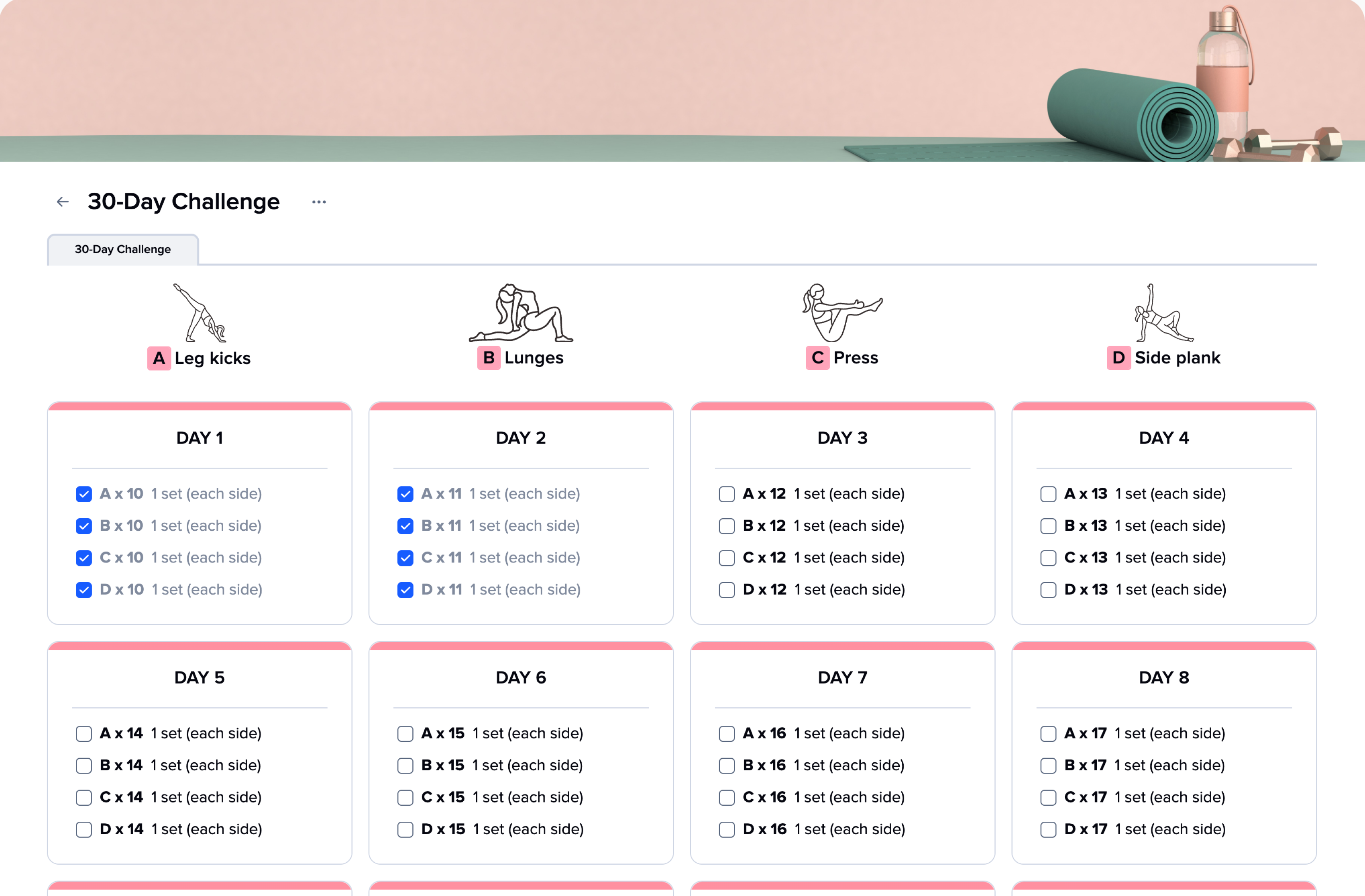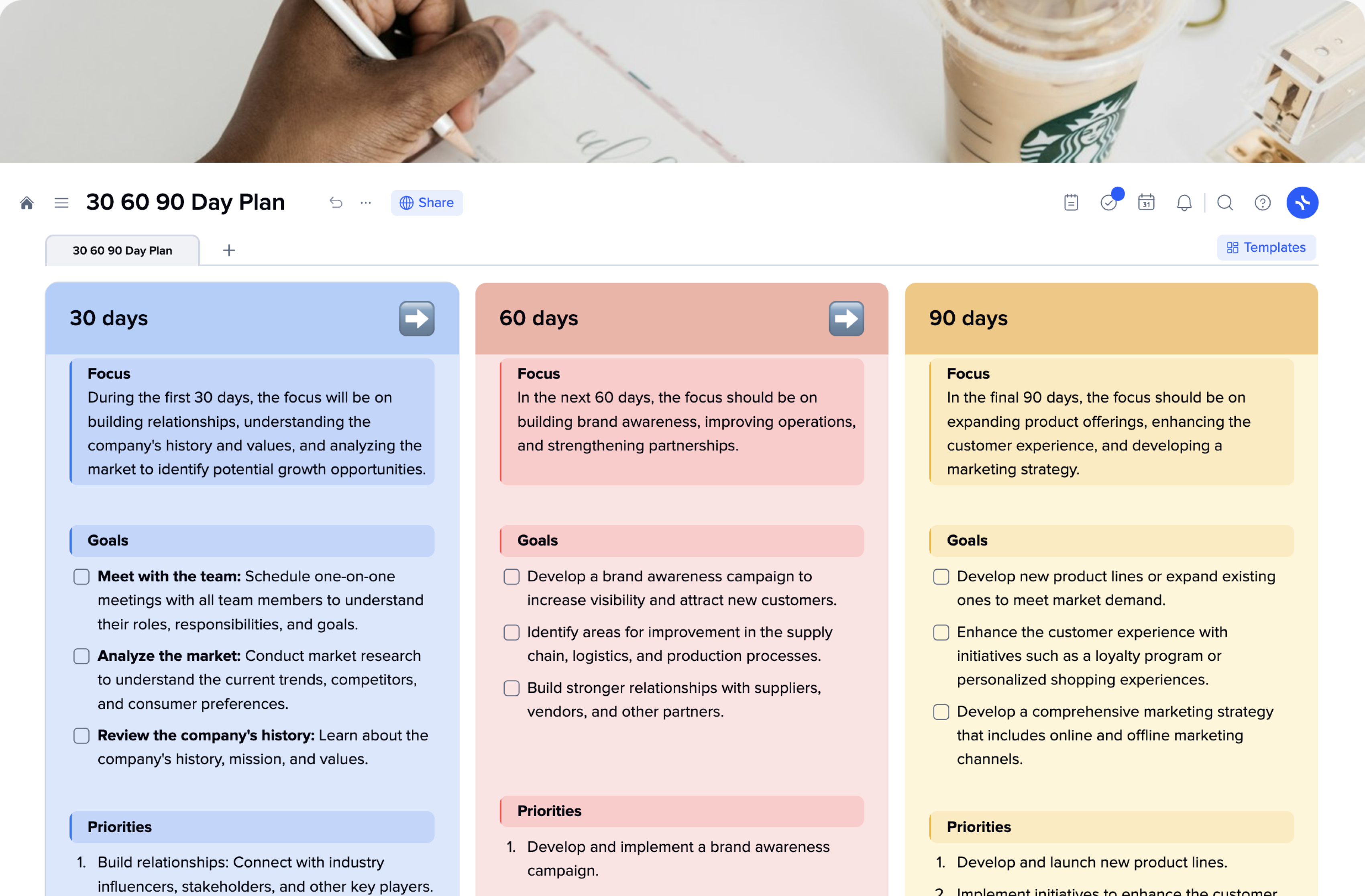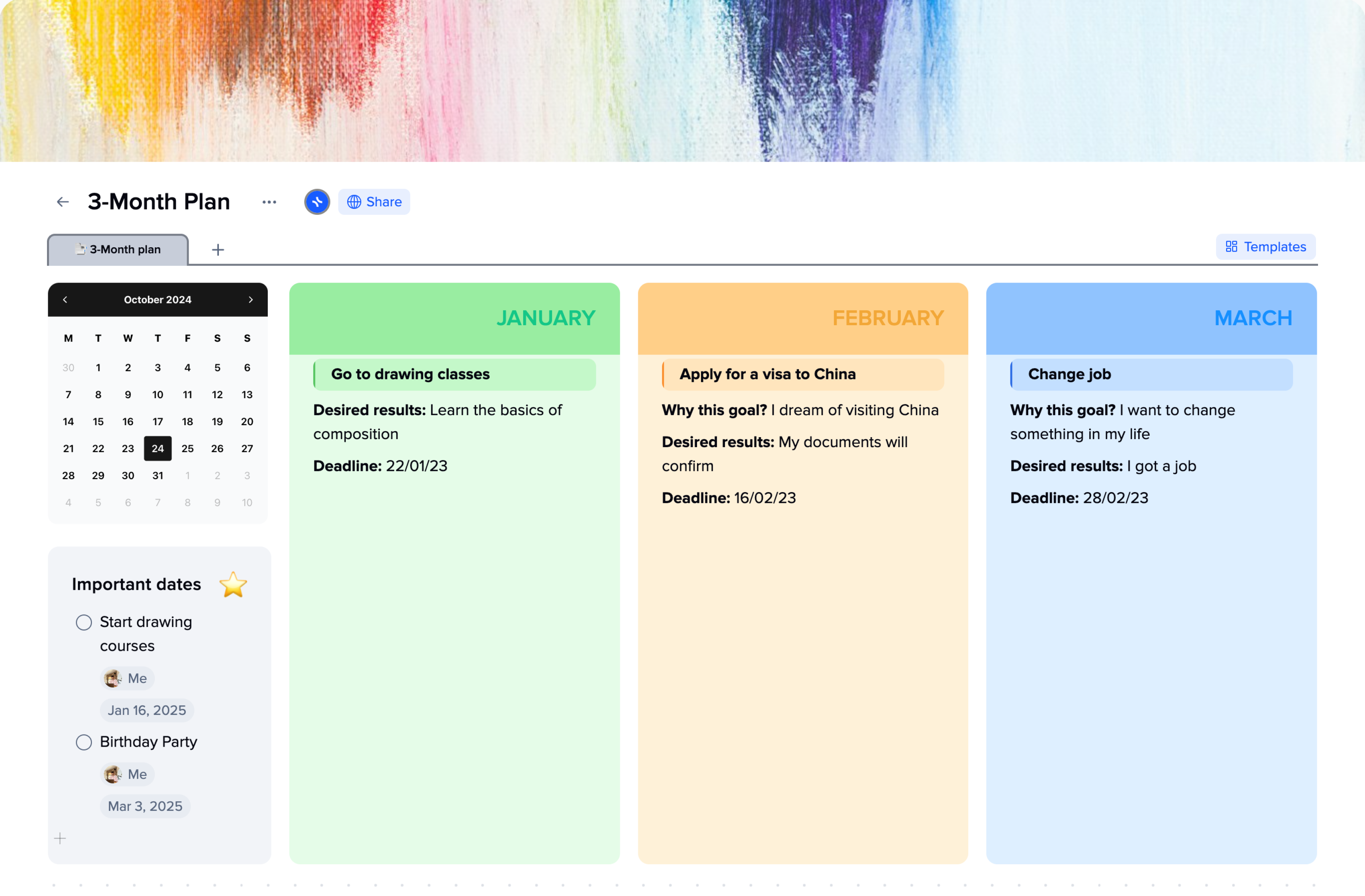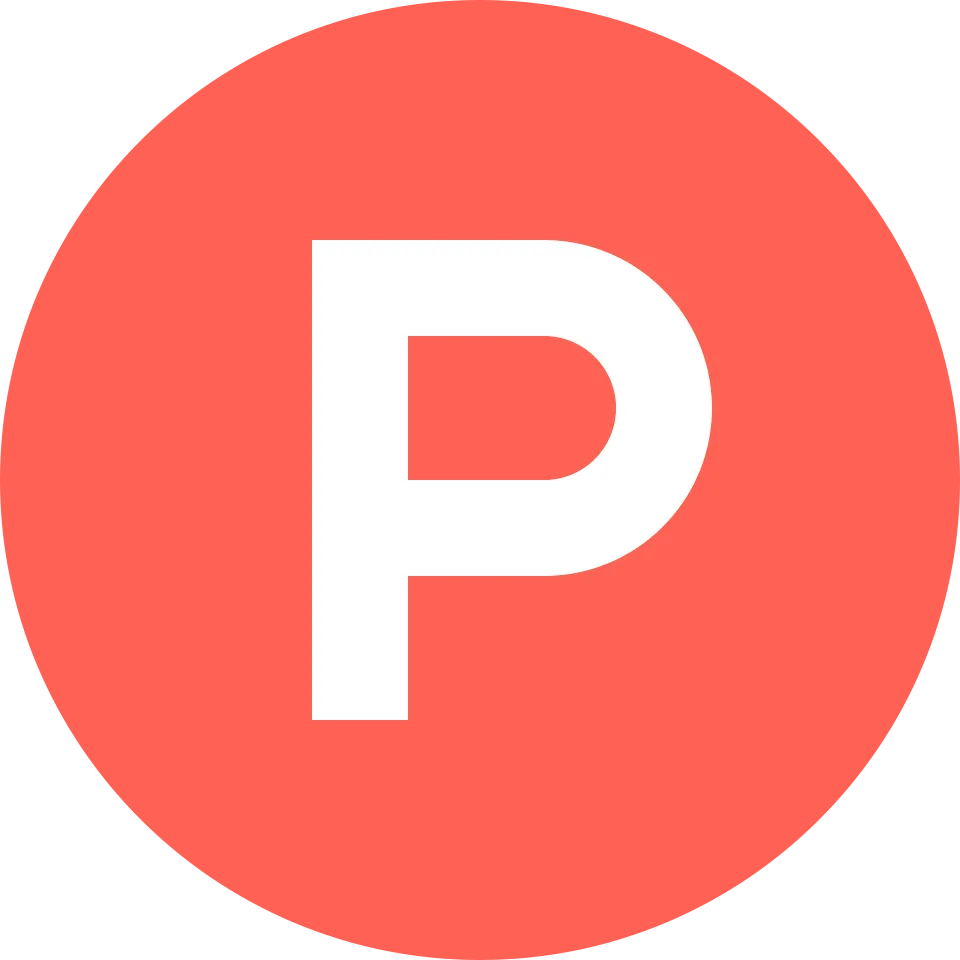Meeting minutes template
When working on a team, being on the same page guarantees a healthy work environment and successfully reaching your shared and personal goals. Your team meetings greatly impact what you do and how exactly you do it.
Meeting minutes help you catch the most important things said or decided during your meetings, write down ideas that may be interesting or worth contemplating later, someone’s requests, hesitations, and everything that may be crucial for your teamwork.
Later, meeting minutes documents become great representations of your team’s development and growth and the best source of information for new team members who need to get on board quickly.
The meeting minutes template helps you organize meetings quickly, capture everything you consider important, and note your questions while sticking to your agenda.
A meeting minutes template will guide your minutes so that you can focus on important points. A premade template is a powerful tool to navigate you through the meeting, saving your focus and energy for spotting and noting critical points.
The xTiles Meeting Minutes Template is a polished, ready-to-use document to shorten your meeting preparation, provide everyone with the space for documenting their thoughts regarding your subject of discussion, and set your goals.
Additionally, here you will find a detailed guide on how to make meeting minutes and an example of meeting minutes to help you with creating your own document effectively and effortlessly.
What are meeting minutes?
You probably have guessed the meeting minutes definition by now. They are the specific kind of notes developed for teams and companies to take down everything that happens during the meeting.
It should not be confused with the meeting agenda, which may be a part of the meeting minutes document to provide attendees with all the necessary information.
In some sense, your team’s board meeting minutes documents are historical documents, a chronicle of important matters, guaranteeing others transparency and accountability.
Let its name not fool you or scare you. That doesn’t mean you will need to sit there and hastily record every word minute by minute. You need to capture the most important and interesting thoughts, assumptions, offers, information, decisions, etc.
On the contrary, every single word captured will turn the document into a mess with many pages with no helpful application for future needs. It has to be easy to scan and understand for people who missed the meeting.
The three whales of any meeting minutes are decisions, next steps, and tasks and assignees. However, if these three can’t cover your meetings, feel free to add any other details.
To better understand meeting notes, you must also know what they aren’t. So, they are not just a summary of your meeting. They are a record of your meeting to provide all attendees with a clear understanding of their next actions.
When do teams need meeting minutes?
Every person who has ever left a meeting and thought, “What has just happened?” with their mind serenely blank would appreciate concise and clear board meeting minutes.
Meetings are a significant part of every team’s workflow. However, how many benefits a meeting brings you depends on how well you use its outcome.
Generally speaking, meeting notes are suitable for every meeting, whether there will be only two attendees or a big team. They help catch and prioritize information and actions you discuss in a meeting. They become the starting point where you can always return to check whether everything is in accordance with the initial agreement taken during the meeting.
They aren’t something new. They have been here for decades, allowing many professionals and teams to review and polish the structure of their meetings to eliminate everything that might slow people and add what can help.
Most importantly, meeting notes are helpful for team members who missed a meeting but need to be acknowledged about its subject to work with others without constantly interrupting them with questions.
If meeting minutes have never been your team’s usual routine, a pre-designed template will help you quickly implement it without disturbing no one’s usual approach to work and discussions.
Some companies’ policy or corporate law requires constant taking and maintaining meeting minutes under corporate governance practices.
Nonprofit organizations are very often required to comply with specific regulations related to their operations, fundraising, tax-exempt status, or governance. To demonstrate compliance with the law, they have to maintain board meeting minutes that document their decision-making processes and actions taken during meetings.
Many companies choose not to take meeting minutes, considering them a waste of time. That misconception is pretty popular because meeting minutes work on long distances. In other words, you need to do it for some time to see their benefits.
If your company or team thinks just the same, we offer you a little experiment. Conduct a couple of meetings as usual, and then compare notes of all attendees or ask them about the outcome of a certain meeting a few days later. 9 out of 10 times, you will see that everyone has different recollections of what was happening during your discussion.
What is more dangerous, even when something isn’t discussed to the tiniest details a couple of times, people still may interpret that differently, especially if the meeting is about something they don’t like or don’t want to do.
Regularly tracking your meeting notes also means providing all of your employees or team members with the same perspective, the same angle from which they will look at the project or business.
Another good point for documenting your meeting is that no task will be missed or forgotten. The list of things that slowly turn into a ticking time bomb will be much shorter, if not empty at all.
How to write meeting minutes
Accountable and transparent meeting minutes save companies time and money and help to direct their resources efficiently. They capture the meeting’s purpose and its outcome and work as the reference anyone can check to ensure they follow up on those results and find answers to their questions.
The main rule of effective meeting minutes is that crucial information doesn’t stay behind, yet your document doesn’t have several volumes. It may be hard to find a golden mean, but ready-to-use meeting minutes templates will help, especially if you don’t know how to do it right.
Now, let’s create your meeting minutes step-by-step using the xTiles Meeting Minutes Template.
What needs to be included in meeting minutes?
A meeting minutes document may be divided into two parts.
First is for the technical details like when a meeting is held, what is the subject for discussion, the agenda, and who attends it. Even though it may seem like these details have no impact on the outcome of the meeting altogether, it’s important to add them to create a fully representative picture for people who will read these minutes later.
The second part is for everything you agreed upon and decided during the meeting. You may add clarifying details to each point, making the life of people who will review the document later easier. However, you need to remember that meeting minutes won’t benefit from your eloquence. Just the opposite, healthy minimalism and conciseness are your best helpers.
1. Prepare & organize
Before the meeting starts, gather all the necessary information, such as agendas, reports, previous meeting minutes, if necessary, etc. When everyone is in the room and ready to discuss the main topic, you won’t have time to clarify all these technical matters.
A meeting minutes template will help you prepare and stay organized during the meeting.
Also, you may devise a backup plan in case your preferred way of taking meeting minutes fails. For example, you may print the xTiles meeting minutes template to ensure that no matter what happens, you can still write down everything that is important.
2. Identify attendees
Prepare a list of the names and roles of people attending the meeting.
The list of attendees is especially crucial, allowing later viewers to know who was responsible for decisions and who may answer some related questions. If someone important couldn’t come, you need to mention that too, as that might deeply affect the meeting outcome.
After everyone has arrived, note who is present and who couldn’t come. You may create a checkbox attendance list in the template and just mark those who have come to the meeting.
3. Record key decisions and action items as the meeting progresses
First things first, note the date and time when the meeting starts. If there was a delay for some reason, note that too.
When a meeting starts, you need to document all key decisions that were taken or agreed upon. That’s a very responsible part because you need to stay focussed and attentive to details during the whole meeting while writing down the most important stuff.
When the discussion starts, fill in your meeting minutes template progressively. You may organize your notes according to your agenda points so that everything will be quick, but when you work on the document’s final version, you will clearly understand what was going on.
Except for noting the decisions and actions taken, also write down attendees who voted for or against. If some conflict of interest occurred, note that and how it was handled too.
4. Go over your meeting minutes
As soon as you can after the meeting, you need to review everything you have just written down and make it more cohesive and clear so that everyone who’s not acknowledged can easily get the point of the meeting.
When reviewing your notes, ask yourself four questions:
1. Are these notes accurate and correct?
Read through the minutes to ensure the information adequately reflects the meeting. It’s important to check your document for all kinds of errors, such as grammatical errors, misspelled words and names, dates, or figures. One incorrect date or name may confuse someone who wasn’t present at the meeting but needs to use the minutes for reference.
2. Are these notes complete?
Read your notes and try to recollect whether all critical discussions, decisions, and actions are documented.
3. Are these notes objective?
Read through your notes to ensure they are objective and impartial. You, as a person, can’t be present in the meeting minutes you’re creating.
5. Are these notes easy to read and understand?
Another point is to make your notes as clear as possible. You may use bullet lists and subheadings to make everything clear and easy to find.
A meeting minutes template will ease reviewing, offering an organized structure and many options to note important points and highlight those that are even more important in your document.
Sometimes you will need to add some comments or additional notes for clarity. Since the information is fresh in your mind and most of it is gathered conveniently in front of you, it won’t be a problem.
All the reports, resolutions, etc., made at the meeting have to be attached to your meeting minutes, or at least you need to mention where they can be found.
6. Distribute & store your meeting minutes
Meeting minutes must be distributed to attendees and those who weren’t present as fast as possible after the meeting or at least before the next scheduled one. However, sometimes you need to distribute them for review and approval first to ensure everything was recorded correctly.
Store your meeting minutes carefully as they officially document your meetings. You may choose to store them in a hard copy, online, or in both forms to ensure they won’t be easy to miss.
5. Quick tips and tricks to make your meeting notes even better
You already learned the basic rules for creating effective meeting minutes. However, there are no limits to perfection, so you may also use the following tips to make your minutes outstanding.
- Use clear and concise language
Write in a clear, concise, and neutral tone. Try to build your minutes without using jargon or technical terms that may be unclear to others because you can’t know who will need to refer to them in the future.
- Prepare in advance
Preparation is half the battle. Review all the important materials, such as agendas or reports, before the meeting so you know what people are discussing. Some meetings require adjusting your template to be more accurate. Finding that out beforehand is better than making changes on the run while taking notes.
- Use a consistent format
If you use one template for all your meeting minutes, people who use those documents later will get used to their structure and learn to find the needed data in a second.
- Use objective voice
Avoiding personal opinions or biases is a must. Make your minutes brief and fact-based, maintaining a neutral tone throughout the document.
We all love meetings with our teams because of inside jokes and funny moments, but it’s advisable to leave them out of the document.
- Ask for clarification if needed
If you’ve prepared before the meeting and studied the agenda, you probably will have no problem with the correct impersonal interpretation of everything said. However, if you’re unsure, asking for clarification is a wise decision to avoid misleading others with your minutes.

